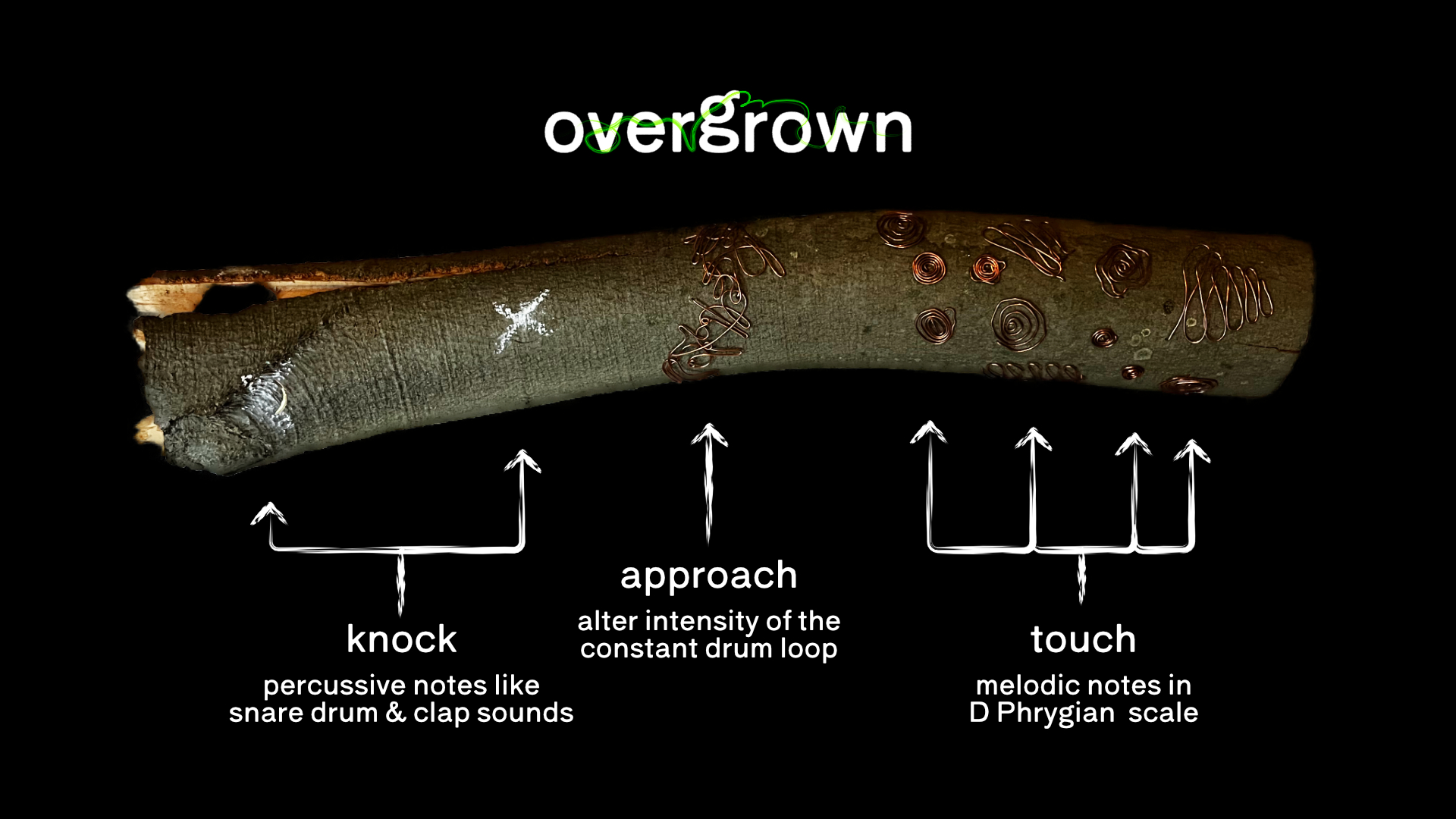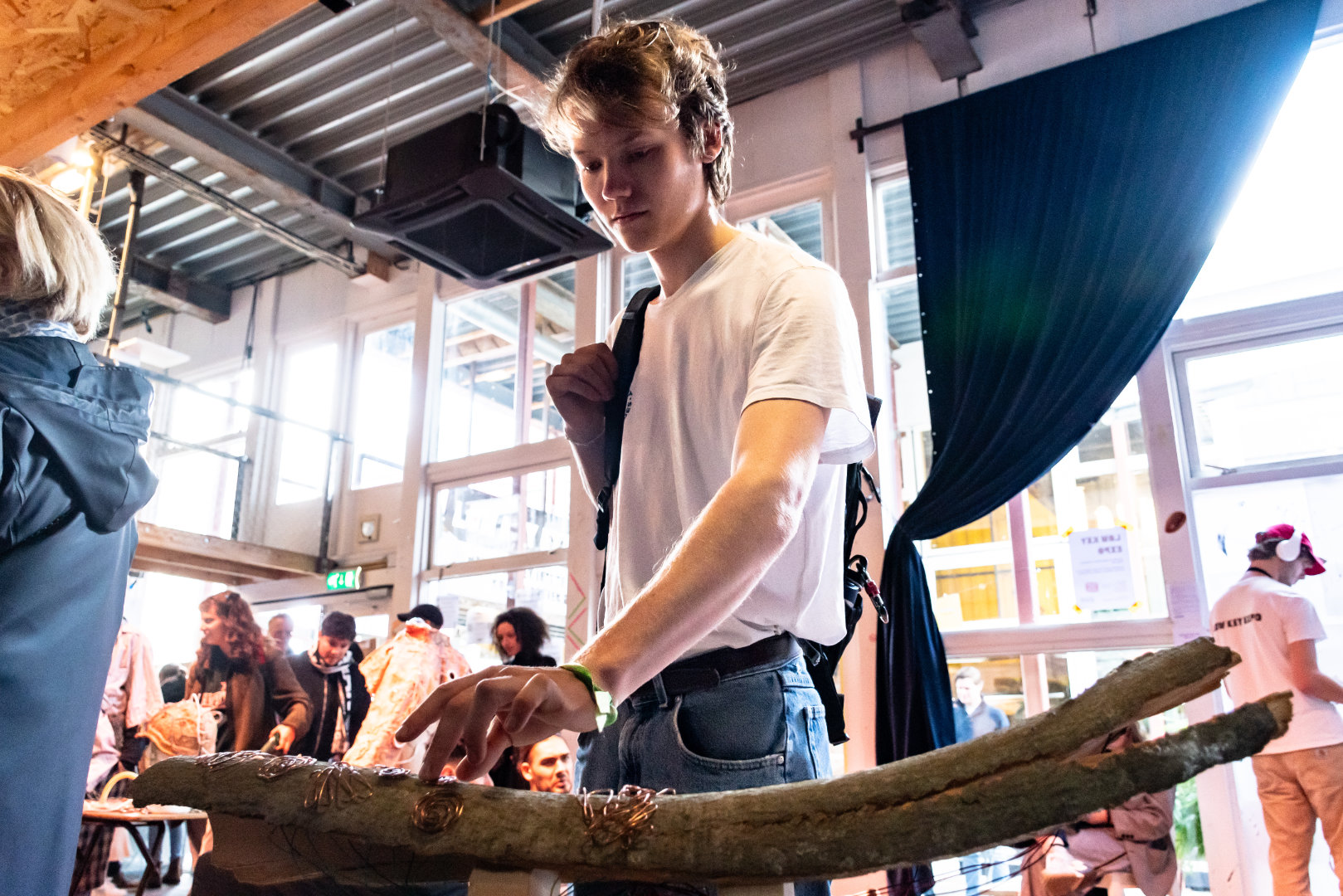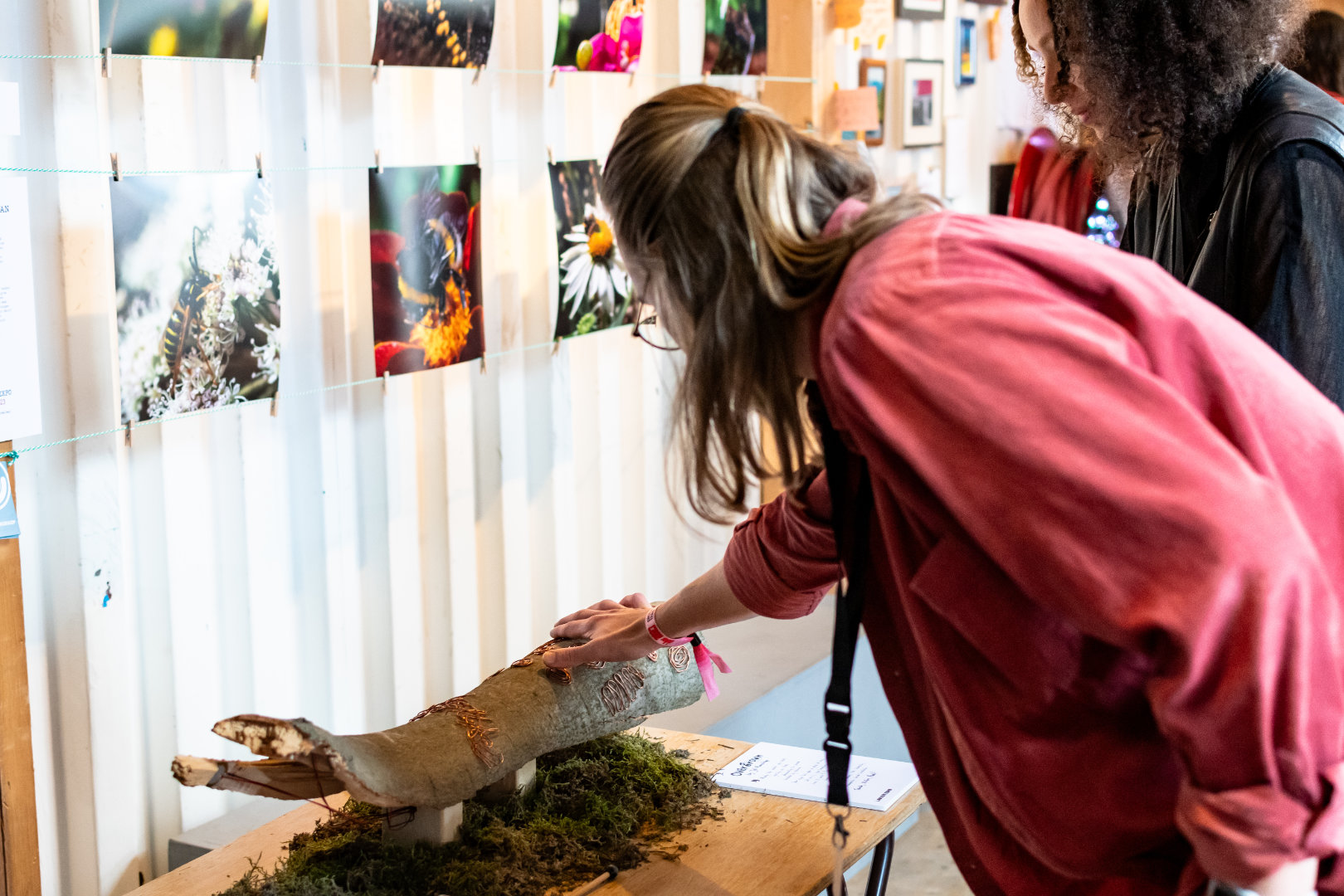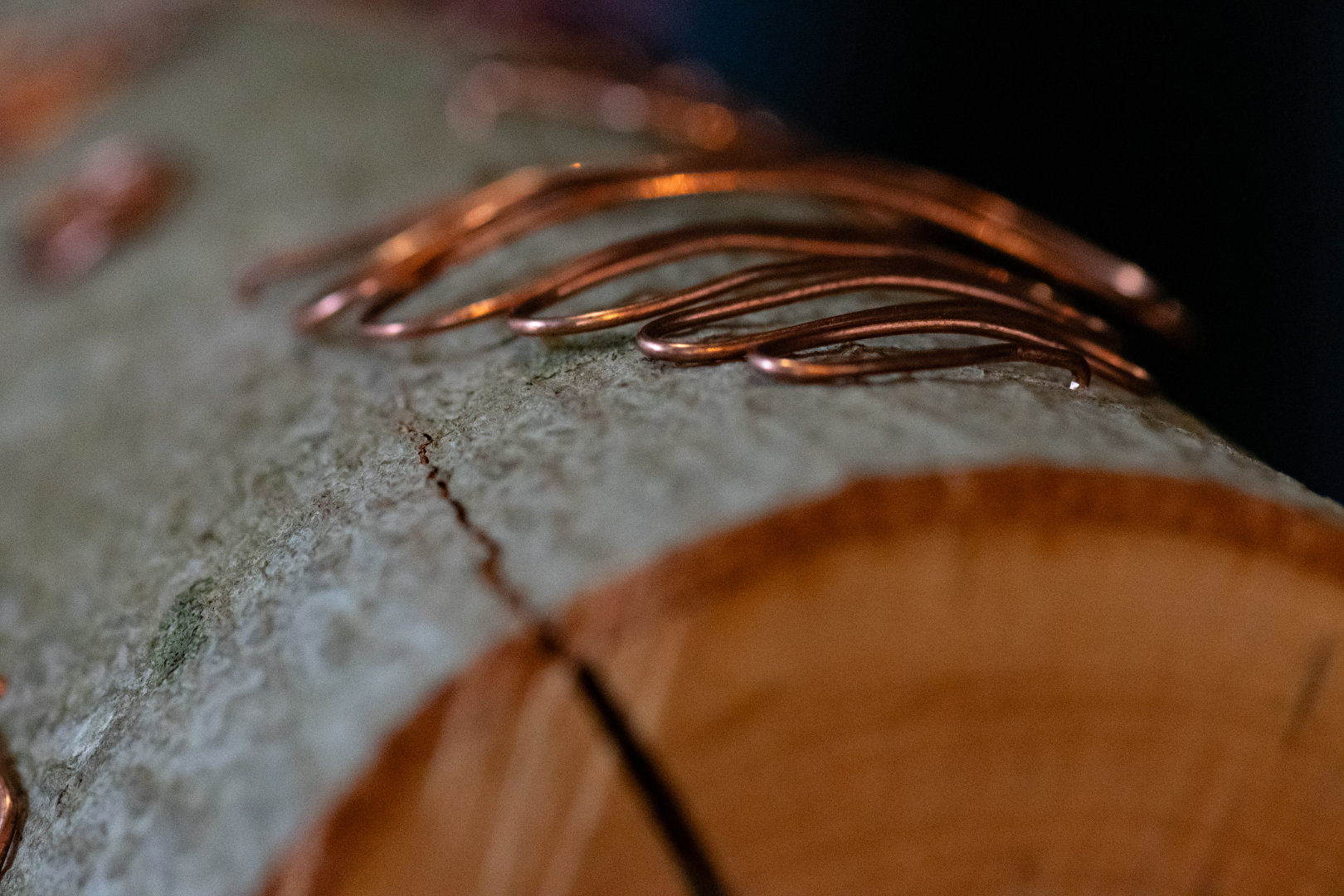OVERGROWN
A continually updated organic, collaborative performance instrument for ambient electronic music
PROJECT TYPE
Individual
EXHIBITED ON
Low-Key Expo 2023
THEMES
Interaction design
Performance
Sound design
User
experience design
CONTRIBUTIONS
Technology prototyping
Material exploration
Experience
prototyping
This project was exhibited on the Dutch Design Week 2023 as part of
the Low-Key Expo 2023, organized by Future Mentors Eindhoven. Read more about this here,
and here.
As a musician and designer, I'm always torn between the instruments I want to use and the sounds I get out of them. Especially now that I've started exploring electronic-oriented music, I am more glued to my computer than ever due to the immense possibilities for creating electronic sounds. To explore how I could work on electronic music without a computer, I wanted to create a musical instrument out of a chunk of tree bark. The tree it used to be a part of was torn down by the wind during a big storm, resulting in this shattered hollow semi-circular piece of bark. The goal of using this material was to look for a raw, unprocessed musical experience that leaned on exploration, learning, and playing in a physical manner, something not usually associated with electronic music. The tree chunk was a perfect playing ground for exploring these ideas since it facilitated interesting tactile and spatial playing, while remaining ambiguous as a musical instrument.
As part of the Low-Key Expo, visitors of the Dutch Design Week 2023 were invited to play with the instrument, thus creating a dynamic ambient performance throughout the exhibition in which the audience plays a significant part. During a four-week design sprint, the concept was designed from a collaborative performance standpoint. Organic-looking self-capacitive sensors allowed people to play notes in a predefined scale by touch; hitting marked areas with contact microphones below them generated percussive sounds; and proximity towards the centered proximity sensor altered the presence of a constantly playing beat. The response was quite positive, as the organic, playful nature and instant playability of the instrument attracted people to wonder and explore, and the size and positioning of controls made it natural to have at least two people playing simultaneously.
Pictures by Evan Broeren.




